Interface and Conflict Geographical Indication and Trade Mark

This article clarifies how geographical indication tags and the concept of trademark are starting to infringe on each other’s intellectual property rights, and how this is leading to problems. In order to create the groundwork for a consideration of potential conflicts between them, it defines and emphasizes the significance of GI tags and trademarks with the use of pertinent examples. It investigates the various forms and root causes of disputes that develop between the two as a result of conflicting market claims. This article also discusses the strategies and controls in place to handle these conflicts. Additionally, it elaborates on the necessity of fresh changes and emphasizes the significance of EU’s suggestions for bettering the implementation and protection of these rights.
Due to their conflicting and continuously expanding application in the field of intellectual property, the relationship between geographical indication tags and trademarks has always been fierce. Trademarks and protected GIs may get into a lot of conflict over identical products that bear the same sign. A major problem in the utilisation of these two IPRs is the overlap over the same subject matter. While GI tags are being used to identify a number of goods with a known geographic origin, trademarks are considerably helping consumers distinguish between comparable goods made by various manufacturers. With the expansion of global markets, instances of conflicting claims between the two parties are increasing, necessitating urgent and comprehensive reforms of the current methods for handling such disputes.
GEOGRAPHICAL CONDITION
A geographical indication (GI) is a label that is placed on products that may be identified by their specific geographic origin and the characteristics and reputation that are unique to that location. To function as a GI, a sign must specify that a product is made in a particular place. Additionally, the origin of the product should be the main factor contributing to its qualities or reputation. Because the qualities rely on the location of production, there is a clear connection between the product and its original place of manufacture. As a result, GIs not only enable companies to profit from the value of their geographically distinct products, but they also inform and draw in customers thanks to the designation of a particular place of manufacturing.
A wide range of products, including agricultural goods, meals, wine and spirits, handicrafts, and industrial goods, can be given GI tags.
A geographical indication tag can be protected in three major ways:
- the use of the sui generis systems (i.e., unique regimes for protection);
- the use of collective or certification marks;
- business practices-focused methods, such as administrative product approval procedures.
When it comes to important topics like the requirements for protection and their breadth, there are differences between these methods. Contrarily, collective or certification mark systems and sui generis systems have some characteristics, such as the establishment of rights for collective usage by those who meet predetermined standards. In general, a variety of methods, including many of those mentioned above, are employed to safeguard geographical indicators in various countries and regional systems. These methods were developed in accordance with different legal customs and in the setting of certain historical and economic situations. Those who have the legal right to use a geographical indicator tag can prevent another party from using it on a product that doesn’t adhere to the necessary production requirements. Famous GI items include Mysore Silk from India, Parma Ham and Parmesan Cheese from Italy’s Parma, Colombian Coffee from South America, and Colombian Coffee.
TRADEMARK
A trademark is a recognisable emblem, phrase, word, or symbol that identifies a certain good and legally sets it apart from all other products of its kind on the market. It is a sign that recognises a company’s ownership of the brand and specifically distinguishes a product as being its property. Trademarks aid in product differentiation among consumers as well as within the judicial and commercial systems. They are employed to recognise and safeguard words and design elements that specify the origin, proprietor, or creator of a good or service. These may be brand names for products, band names, band logos, or corporation slogans. The use of a trademark deters unauthorised duplication of a company’s or person’s goods or services. Additionally, they forbid the use of any marks that pose a significant likelihood of confusion with an already-existing mark. This suggests that a business cannot use a sign or brand name that is identical to, or sounds close to, one that is already registered, especially if the goods or services are connected. For instance, it would be illegal for a company that manufactures soft drinks to have a name or symbol that is too similar to Coca-Cola.
By submitting a registration application to the national/regional trademark office and paying the necessary fees, trademark protection can be secured at the national/regional level. On a global scale, there are two options: either use the Madrid System of the World Intellectual Property Organisation (WIPO) or file a trademark application with the trademark office of each nation where protection is desired. The Trade Marks Act, 1999 governs the filing of manual or electronic applications for trademark registration along with the enforcement and infringement of trademarks in India. The certificate of registration will be delivered if there are no objections submitted against the name registered within ninety days. In the event of litigation, for instance, registration provides legal clarity and improves the rights holder’s position. In India, trademark infringement is a punishable offence that carries both civil and criminal penalties. Apple, Nike, McDonald’s, and Bajaj are a few examples of well-known trademarks.
MAIN DIFFERENCES BETWEEN TRADEMARK AND GEOGRAPHICAL INDICATION
- A trademark is a symbol used by a company (whether a legal or moral entity) to differentiate its products from those of rivals, whilst geographic indications (GIs) serve as a reliable identifier of a product’s location of origin. A geographical identifier lets customers know that a product was made in a certain location and that those specific qualities are attributable to that location. All manufacturers who produce their goods in the location identified by a geographical indication and whose goods exhibit typical characteristics may use it. Protected geographical indicators that could mislead consumers about the product’s genuine origin cannot be used by unauthorised parties.
- The term “geographical indication” also refers to “appellations of origin” that are applied to goods that have a particular quality that is solely or primarily a result of the location in which they were produced. However, trademarks are frequently distinguished as being utilised by a business to set itself apart from competing businesses’ products and services. A GI is a sort of “collective mark” used by local farmers and artisans. A trademark can be sold and de-localized, unlike a GI.
- While a GI is available to any producer in the locality or region in question, a trademark is a personal right. The geographical designation may be used by all producers in that area. For instance, “Mountain” may be used by any of the honey producers in the Cameroon Mountain region, but only that producer may refer to its produce as “XTRA” Mountain Honey if that producer has filed the trademark “XTRA” for its honey.
- The same geographical indicator may be used by all businesses in a region, but only one business can utilise a trademark registered in its name and address.
- While a geographical indication can only be political-geographical names and symbols related to places, a trademark can be any combination of letters, words, numerals, or just a single number, as well as an abbreviation, a name, a device or figurative element, a hologram, a sound, or a smell.
- The creation of a trademark is the result of human inventiveness. Human imagination is capable of coming up with a unique and fresh sign or expression that allows one product or service to stand out from similarly positioned ones. A geographical indication, on the other hand, is a phrase that pinpoints the location of a product’s origin. Unrelated to human inventiveness, a geographic indication is connected to terrain, human activity, climate, or other variables. As a result, while trademarks emphasise a product’s manufacturer, geographical indications emphasise a product’s geographic origin and some derived qualities.
CONFLICT BETWEEN GI TAGS AND TRADEMARK
In an effort to protect products in the market by employing geographical indication tags and trademarks, which are two separate types of distinguishing marks used on products, disputes frequently emerge. When many parties request permission to use a distinctive sign, disputes over who has the sole right to do so can arise. Systems are in place to prevent disputes between conflicting claims to the ownership of a trademark. According to the territoriality principle, similar trademarks that are used for the same goods or services can survive in various countries.
However, the concept of territoriality has significantly weakened as a result of trade globalisation and the growing prominence of new, borderless communication means, most notably the Internet, needing new solutions. The coexistence of similar trademarks is acceptable under the concept of speciality if they are applied to various products or services. According to the principle of priority, the first person or entity to use or register a particular trademark also receives the exclusive right to use it.
Compared to other regimes, the international trademark regime has a strong intellectual and institutional foundation. As a result, conflicts between a previous trademark registration and a future GI application are common, whether under a sui generis registration procedure or a trademark regime. One method for resolving these issues is the “first in time, first in right” idea. The expression serves as a succinct way to refer to the concepts of priority and exclusivity when they are combined.
SOLUTION
The European Union, a leading proponent of GI protection, is constantly seeking to increase the level of protection that is now in place. In order to provide GIs with greater protection, it has suggested additional changes. The suggestions from the EU include a proposal for the establishment of an international register for Geographic Indications (GIs) relating to wines and spirits as well as specifications for the expansion of Art. 23 of TRIPS’ functionality to cover all GI-designated commodities. In addition, the EU created a list of 41 GIs that are regarded as generic in nations outside of the EU and pushed for them to receive the protection they merit. These GIs cannot be regarded as generic, says the EU.
All Geographical Indications (GIs) will benefit from the more comprehensive protection provided by these modifications, which is presently only afforded to wine and spirits. No potential of customer confusion would exist as a result, and producers would not experience unfair competition from those who employ correction labelling. Additionally, removing the option to use corrective labels will stop unfair free-riding of GI-labeled products. This is seen as a significant goal in and of itself because it lessens the possibility that a GI will get generic as a result of usage. Enhanced protection would also benefit developing nations because it would make it easier and more efficient for their products to reach wealthy nations’ marketplaces.
Thus, a worldwide registration for GIs and a wider application of TRIPS Art. 23 are essential for goods coming from developing countries. By assuring protection for the 41 GIs specified in the list and broadening the scope of TRIPS Art. 23, GI protection will be more effective. To come to a realistic agreement on GI protection that is acceptable to all stakeholders, international negotiations are necessary. Without a widely accepted, effective, and acceptable protective system, the benefits of GIs won’t be completely realised.
CONCLUSION
In essence, geographical indication tags are used to differentiate products based on specific geographic regions, whereas trademarks are used to differentiate products based on the company or enterprise they belong to. Conflicts over their use are inevitable given that both of these are examples of intellectual property that are utilized to distinguish products and services on the market. Although a variety of currently used ideas and techniques are being used to resolve such conflicts effectively, there is still much space for improvement. As a relatively new field under the IPR framework, it still needs to expand and advance. When such ambiguities occur, some decisions are made arbitrarily and others cautiously. It is a very difficult process to distinguish between the two and define their separate territories, and this issue will only be resolved with time.

